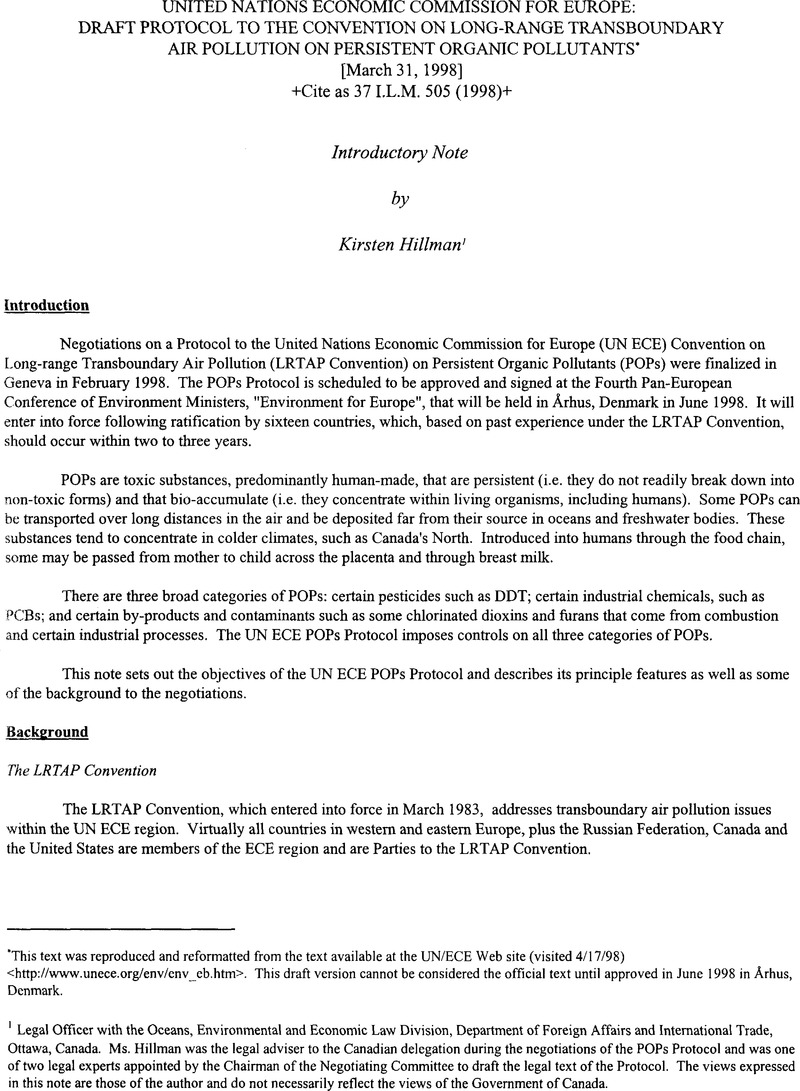Article contents
United Nations Economic Commission for Europe: Draft Protocol to the Convention on Long-range Transboundary Air Pollution on Persistent Organic Pollutants*
Published online by Cambridge University Press: 18 May 2017
Abstract

- Type
- Treaties, Agreements, and Related Documents
- Information
- Copyright
- Copyright © American Society of International Law 1998
Footnotes
Ms. Hillman was the legal adviser to the Canadian delegation during the negotiations of the POPs Protocol and was one of two legal experts appointed by the Chairman of the Negotiating Committee to draft the legal text of the Protocol. The views expressed in this note are those of the author and do not necessarily reflect the views of the Government of Canada.
This text was reproduced and reformatted from the text available at the UN/ECE Web site (visited 4/17/98) < http://www.unece.org/env/enveb.htm>. This draft version cannot be considered the official text until approved in June 1998 in Århus, Denmark
References
Notes
2 These are Aldrin, Chlordane, Chlordecone, Dieldrin, Endrin, Hexabromobiphenyl, Mirex and Toxaphene.
3 This phrase is generally used to designate countries in transition from a centrally planned to a market economy. In the UN ECE context this designation would refer primarily to Eastern European countries and the Russian Federation.
4 These are PAHs, dioxins, furans and hexachlorobenzene.
5 As with the applications of “best available techniques”,Parties must apply these limit values to existing sources only insofar as this is technically and economically feasible.
6 The UNEP Basel Convention on the Control of Transboundary Movements of Hazardous Wastes and their Disposal, 1989.
7 EMEP stands for “the Cooperative Programme for Monitoring and Evaluation of the Long-range Transmission of Air Pollutants in Europe” which is set out in Articles 9 and 10 of the LRTAP Convention.
- 2
- Cited by


